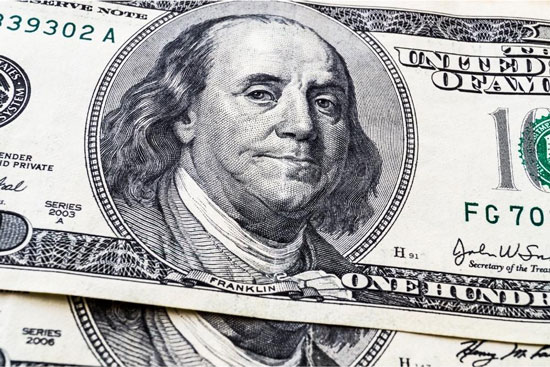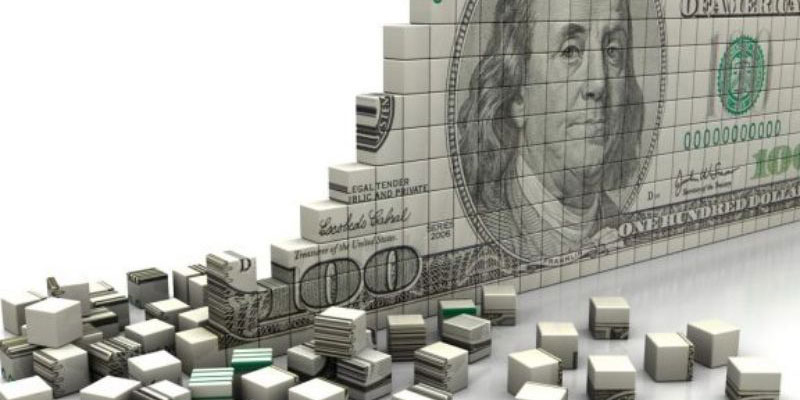What Is the U.S. Dollar Index (USDX)?: A Comprehensive Guide
This article serves as an introduction to USDX according to its history, purpose, what it is comprised of, and some practical explanations of how USDX is calculated.
1. USDX History &'' Introduction
The U.S. dollar has been steadily declining against the six currency basket. This is an obvious trend readily seen in the S&''P 500 Index and Gold Prices (in U.S. Dollars).

However, the U.S. dollar began to gain strength against the 6 currency basket. This turnaround sparked the interest of some hedge fund managers to launch a product that hedges out U.S. dollar exposure and allows investors to profit from this development. The product, known as "U.S. Dollar Options", was first introduced in 1973. Since then, the U.S. dollar has continued its successful rally against the 6 currency basket during subsequent years.
What is the U.S. Dollar Index?
The U.S. Dollar Index measures the relative value of the U.S. dollar versus other currencies and how it's changed over time (the dollar index was created in 1973. Today, the index is maintained by a Swiss bank and serves as an indicator of the dollar's relative strength or weakness - so, if it rises over time, then that means that rather than being viewed as low-performing, our greenback is seen as high-performing with other currencies measured against it - and vice versa for when it falls over time.
The index is essential to investors not just because of the fluctuations it can make in the value of a portfolio. Still, because it can serve as an indicator for sentiment towards the U.S. dollar - and if the U.S. dollar is seen as weak and vulnerable, then that means that investors see other currencies as more secure in holding them over here rather than down under; hence, our currency is seen as relatively strong and stable up against others compared to when it's on the back-foot.
How does it work?

The U.S. Dollar Index is the sum of the values of six currencies - the U.S. dollar, euro, Japanese yen, British pound, Canadian dollar, and Swedish krona. All you need to know is that when you buy an ETF like the iShares USD-90 (NYSEARCA: FXU), it takes in all of these values and then converts them into a U.S. dollar index value before giving back any returns to customers (it also means that you can easily trade on this currency index through CFE).
The Value of the Currency Index (the "buy and hold" strategy, as well as the USDX futures contract)
The USDX can be used in conjunction with a long-term "buy and hold" strategy. Instead of investing for short-term gains, where you're more vulnerable to currency market fluctuations and instability, you can invest in relatively stable currencies with a high value.
The long-term "buy and hold" strategy aims to make money by buying assets with a high value and then holding them over time - it's similar to having a portfolio of investments that appreciate the value or otherwise increase in value. For example, you can look at currency indices like the S&''P 500, the NASDAQ, etc. These are all assets traded on exchanges (the S&''P is a stock index whereas NASDAQ refers to an exchange for companies to trade shares on - NASDAQ is also known as "The Nasdaq Market", it's U.S.-based). The idea of the "buy and hold" strategy is to buy a currency like the U.S. dollar, which has already appreciated over time, then hold it over time and not sell out of the investment (if you do sell out of your investment, you can make a profit or a loss on any given asset).
Investors have used the USDX as an indicator of how fast or slow the U.S. dollar is rising against other currencies - as it rises, it means that investors see our currency as strong and stable; this means that if investors are buying our greenback rather than other currencies, then they're seeing it as relatively low-risk to hold compared to other currencies such as the euro. And when the USDX falls against other currencies, investors see the U.S. dollar as relatively high-risk to hold over here (which is a good thing if you are holding long-term!).
The value of the S&''P 500 and how it's changed over time
The idea is that if investors can see how your currency is performing, then they will receive a clear signal on whether they should buy or sell into the market - with this in mind, we can use indices like the S&''P 500 (the S&''P 500 is an American equity index which tracks stock prices in America's biggest companies). It's a bit like a currency index. It measures how well our greenback is doing against other currencies - if investors are buying more U.S. dollars than buying other currencies, they see America as relatively high-performing compared to other countries against it. If investors are selling off our currency (which is a good thing), they also see America as comparatively low-performing against other countries.
The S&''P 500 (or any equity index like it) is money that you can sell if you wish; it's like a gold mine of money that you can sell if you want to. With this in mind, we can compare it to currencies like the U.S. dollar and the Japanese yen. With these two currencies, at the moment, investors are seeing them as relatively safe to hold over here (because they're rising against other currencies), so they see their value as relatively strong over here - whereas the S&''P 500 is money that you can sell if you wish - that means it's a good indicator of how well our currency is doing against other currencies.
The Value of Currencies (the "buy and hold" strategy, as well as the USDX futures contract)
The USDX can be used in conjunction with a short-term "buy and hold" strategy. Instead of investing for long-term gains, where you're more vulnerable to currency market fluctuations and instability, you can opt to invest in relatively stable currencies with a high value.
The short-term "buy and hold" strategy aims to make money by buying assets with a high value and then holding them over time - it's similar to having a portfolio of investments that appreciate the value or otherwise increase in value.








